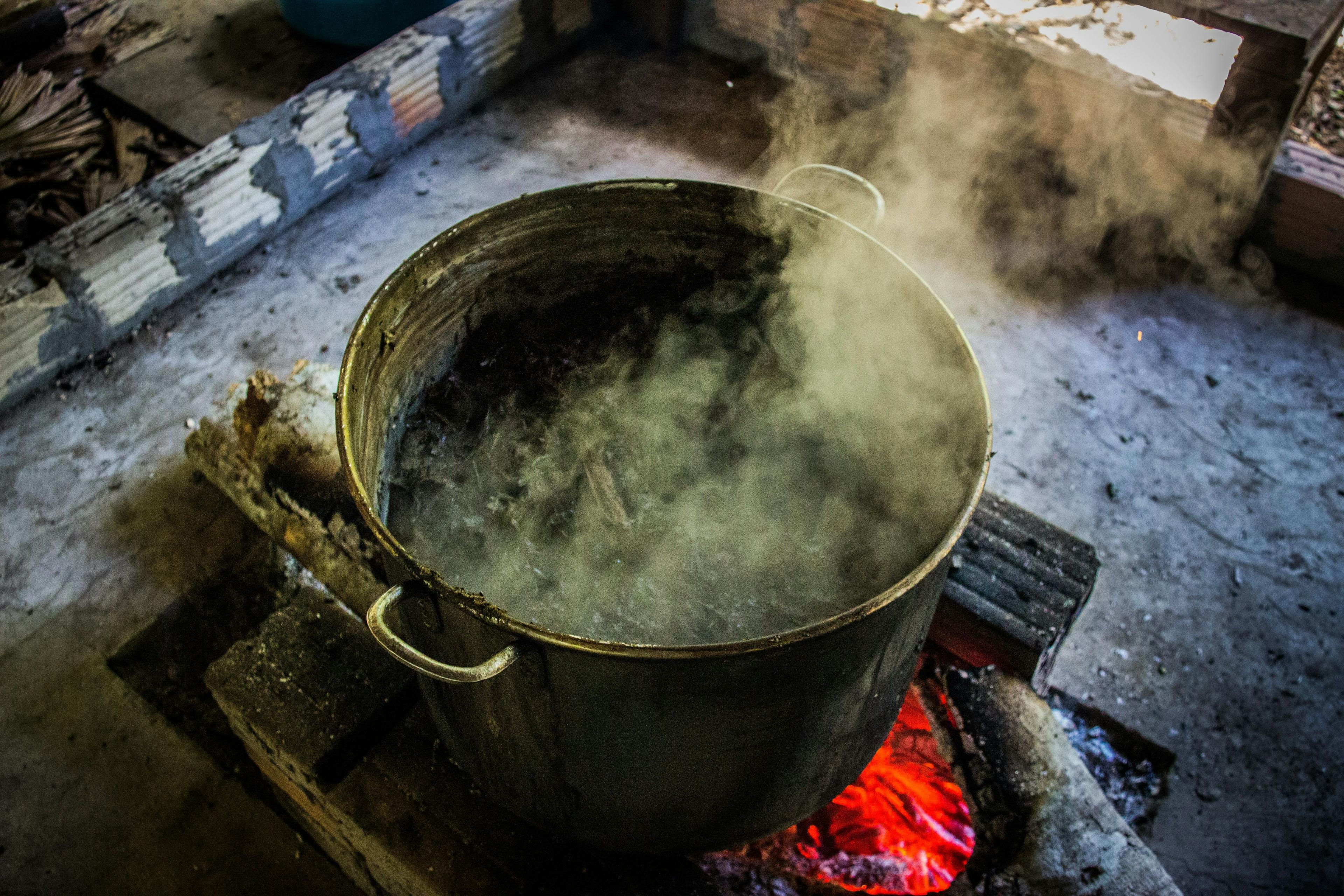Ayahuasca, also known as caapi or yagé, is both a psychoactive botanical brew as well as the individual plants used in its preparation by indigenous groups in Bolivia, Brazil, Columbia, Peru, and Ecuador. Due to its growing popularity in modern times, because of extensive media coverage and the associated rise in tourism, the three components of this session and their findings remain relevant today. This review addresses the two papers: Psychotropic Properties of the Harmala Alkaloids by Claudio Naranjo, and The Making of the _Hallucinogenic Drink from Banisteriopsis Cuapi in Northern Per_u by Dermot Taylor. Together we will look under the hood of this session and explore what is quickly becoming a household-name psychoactive.
Core
Caapi is the specific name of one of the plants used to prepare ayahuasca -- the harmala-rich Banisteriopsis caapi -- which belongs to the Malphigiaceae family. Both papers allude to the geographical spread and diversity of plants containing harmala (which refers to a group of alkaloids containing ß-carboline structures). Such plants were thought to have originated from Russia and the Middle East. At the time of this symposium (1967), there were approximately 75 accepted Banisteriopsis species_,_ predominantly found in humid tropical and subtropical regions of South America and, to a lesser extent, Africa. Early work isolating and classifying these alkaloids was rather rudimentary, and the exact identification of the plants from which these extractions were made was often unclear. The first documented identification of a plant used to prepare ayahuasca was made by a British explorer in the middle of the 19th century, Richard Spruce. He recognized the woody Banisteriopsis caapi vine, initially classified as Banisteria caapi, as being an active component of a hallucinogenic beverage prepared and drunk by tribes in Amazonian Brazil. It wasn't until much later however, when more thorough chemical investigations were carried out on a Peruvian sample of B. caapi, that this was confirmed.
Other Banisteriopsis species investigated during this early period include B. inebrians and B. rusbyana, after both were found present in ayahuasca admixtures. Harmine (a harmala compound) was detected in B. inebrians, however B. rusbyana, known by the local communities as "yaje", was found to not contain any of the ß-carboline alkaloids but rather large amounts of dimethyltryptamine (DMT). DMT had previously only been found in plants used to make psychoactive snuffs in the Americas and Caribbean. Snuffs refer to powders prepared by grinding plant matter and administering them intra-nasally. This is considered to be the first documented association of DMT with ayahuasca. These indigenous discoveries and practices were important to document at this time, especially given that indigenous knowledge is largely oral, making it vulnerable to being lost when its continual transmission is interrupted. Rapid urbanisation and disintegration of these peoples and their homes has occurred since this early research took place. Much more research has been carried out since these discoveries, and it would appear that the DMT-containing B. rusbyana may actually be what has since been classified as Psychotria viridis or Diplopterys cabrerana.. ß-carboline containing species are widespread, both botanically and geographically, as are tryptamine-containing plants, and the authors made considerable mention of many other plant families that share these compounds. Much more investigation regarding these species and evidence of similar uses would be of immense value.
From this session it seems that the ß-carboline harmala alkaloids were thought to account for the hallucinogenic properties of ayahuasca. Naranjo explored the possibility of in vivo harmala alkaloids -- namely the pineal hormone adrenoglomerulotropine -- which he discovered to be identical to 6-methoxytetrahydroharman, a known Banisteriopsis alkaloid. He suggested that this was the first discovery of an endogenous hallucinogen. Both the nature of endogenous hallucinogens and the role of pineal hormones in consciousness deserve more research and attention.
Harmala-induced hallucinations were described by the authors as atypical and likened to a state of inspiration and heightened introspection, but with pronounced visual hallucinogenic effects. In studies, subjects were able to clearly distinguish between the effects of mescaline and that of any of the ß-carbolines, despite there also being a clear distinction between the effects of the different ß-carbolines. In one experiment (n=30) comparing mescaline-induced hallucinations with those from harmaline, the precise nature of the hallucinations was analysed. Compared to mescaline, more visceral sensations such as a progressive tingling of the extremities leading to numbness were observed with harmaline. The physical environment, as perceived visually by the subject, was not drastically altered or mistaken for reality, however minor augmentations of motion, vibration of objects, lightning-like flashes and some superimposition of images were reported. Closed-eye visual characteristics were reported to be "dream-like", along with physical relaxation and observed withdrawal from the physical environment, such as a decreased desire and tendency to communicate. More than half of the harmaline subjects experienced nausea with vomiting followed by general malaise. Unsurprisingly, IV administration had almost immediate effects, not dissimilar to anaesthesia, whereas oral administration took approximately an hour before effects were observed. It would be worth investigating gastrointestinal absorption, whether first pass metabolism occurs, as well as the food status of subjects. Electrocorticographical experiments in cats showed that harmaline acted as a stimulant in the reticular formation of the midbrain and brainstem with regular high voltage wave bursts whereas, in the cortex, spindle bursts of high voltage were identified. Cortical effects were difficult to interpret; however they were thought to be inhibitory based on their ability to be overcome by reticular formation activity, thus rendering a "dream-like" state.
Limitations
This chapter on the early history of ayahuasca appears to have been a particularly confusing one, and this is evident throughout the session. In particular, there were inconsistencies, and some accepted errors, regarding early botanical identification of these plants. This was compounded by the fact that it appears that several botanical variations have been identified as being used to prepare ayahuasca, and that similar or even identical vernacular names are also used for certain snuffs -- prepared from related or entirely different plants. Both papers were rich in information and I feel that tables and figures could have been utilised more extensively to convey the more technical content. The relevance and merit of some of this work, particularly on the incongruencies over the identification of plant samples, combined with the growth in scientific understanding of and experimentation around psychedelics as recreational and therapeutic tools, suggests that many of these experiments should be repeated today.
Contributions
This session provided an early ethnopharmacological understanding of the complexity of ayahuasca as a plant and a beverage with deep cultural meaning. This work undoubtedly helped set the scene for further interest and research by providing in-depth chemical information on ayahuasca constituents and their properties.
References
Efron, Daniel H. (1967) Ethnopharmacologic search for psychoactive drugs: proceedings of a symposium held in San Francisco, 1967. Washington, DC: U.S. Department of Health, Education, and Welfare. Pp. 385-404.

